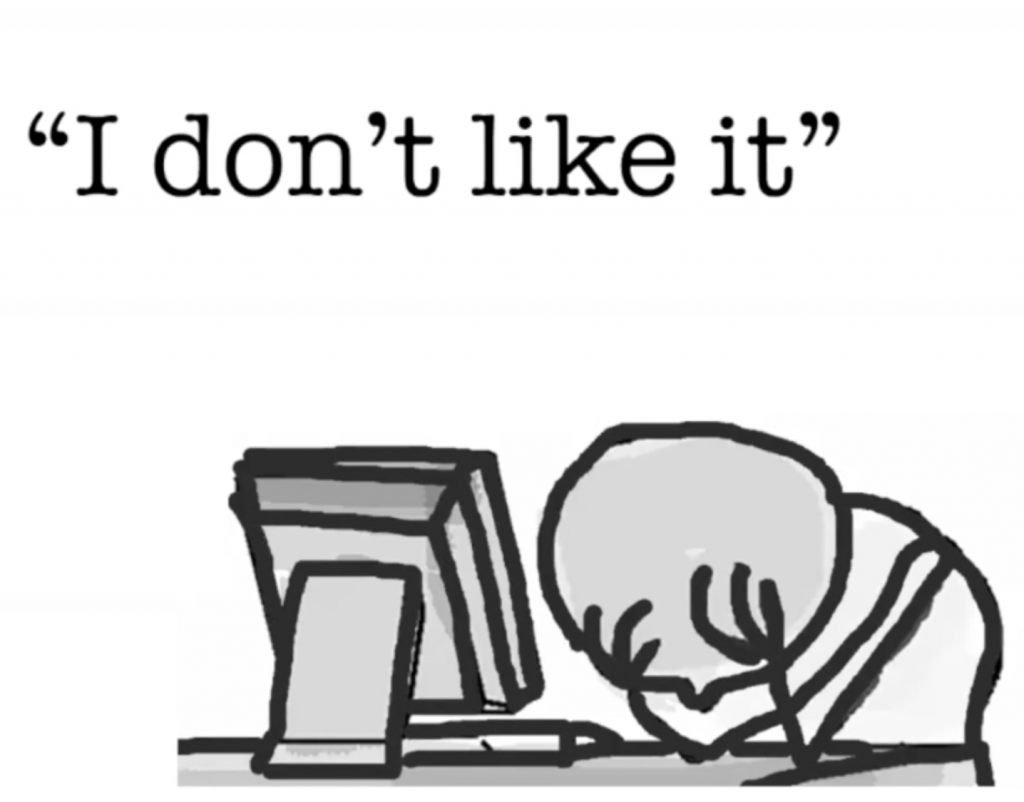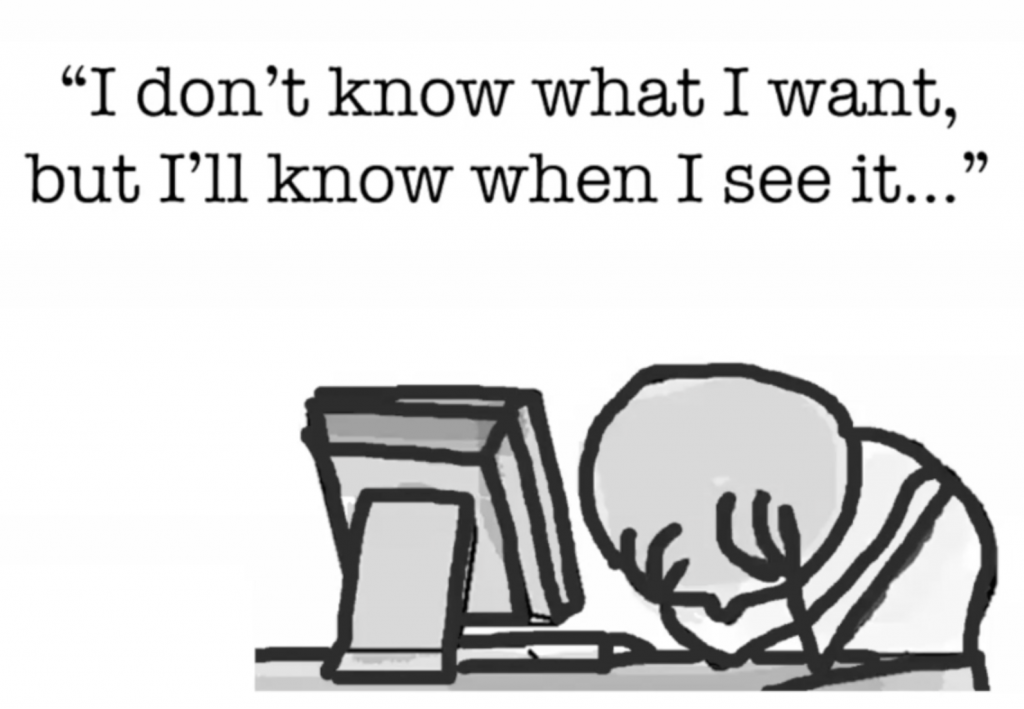How to Speak Designer

A CBC Forum Panel continued
The CBC Forum panel “How to Speak Designer” was held on October 22. The in-depth look into the designer’s process and language was deeply informative. So much so that we wanted to continue this inspirational talk off-camera. If you’re looking for more insights after watching the 1-hour event or just want useful tips on how to best communicate with your designers, read on.
Dave Caplan, VP and Creative Director, Little Brown Books for Young Readers
What do your timelines look like at your house and how do you determine how long a project will take you to layout? At what points do you bring the authors into this process?
Dave: This is a great question! For fiction titles, we ideally reserve 3-4 months for the cover design process, from receiving the initial brief to a finished cover. This allows the designer time to read the manuscript and begin brainstorming ideas while they are, of course, still managing all the other titles on their plate. Having this much time also leaves us with enough room to pivot and go off into a completely new direction should the concept or artist ultimately not work out. With all that said, we have been known to crash in a high profile book and have a finished cover within 2-3 weeks. We have a goal of having finished covers in time for our initial seasonal launch presentations with Sales, and the designers work really hard to make sure this happens.
We like to engage our authors at the very beginning concept stages to make sure we’re all aligned with the direction of the cover. We will then share sketches to make sure we are correctly capturing any critically important details (character, setting, etc), and after that we will send them the finished cover and design.
Mary Claire Cruz, Senior Designer, Houghton Mifflin Harcourt

What do your timelines look like at your house and how do you determine how long a project will take you to layout? At what points do you bring the authors into this process?
Mary Claire: I think a standard novel cover will take about 3-4 months to make sure you have the time to fully explore and address any revisions needed in the process. Some titles “crash” onto a season so then you have less time. It can vary when we share a cover with the author, but usually we will share when we are about to hire an artist, when we have an approved sketch and want to move on to final art, and when we have a final cover!
Tell us more about the time management process of picture book design.
MCC: This can be more or less set by the editor, but often editorial will run proposed dates past me. You want to make sure you have enough time for the artist to come up with ideas, but also fit in a round or two of sketch revisions (potentially more depending on the artist), before developing the final art. We establish the schedules pretty early and definitely with input about what works best and is possible for the illustrator.
What’s the best way to avoid that problematic design cycle between designer and editor when a design just isn’t working? Is there preferred terminology for designers to hear to better clarify your intent?
MCC: I think this can vary, but for me when designs aren’t working I like to regroup with the editor and discuss what we want to communicate about the book on the cover and what is the selling pitch/hook. This usually gets me to understand what themes and imagery I need to focus on and the book’s positioning. Then, I think about very basic composition and hierarchy. What’s the most important thing we need to be seeing? Title? Imagery? A series logo? This usually allows us to figure out what wasn’t working and what needs to shift to get us back on track.
What are your least favorite words/phrases people use when giving feedback?
MCC: “We want the cover to be something we haven’t seen before.” This one always is difficult because it communicates interest in having a unique cover but not in a way that guides what you are interested in seeing.
What is some feedback/direction that you wish the folk in the room would use to create a more collaborative/constructive jacket meeting?
MCC: Mostly I want to hear “We love it! Done!” but if the group does want to see changes maybe something like “We are really excited to see [elements of cover that you like] on this cover! We like it because it communicates [why it’s working/why you want it on the cover]. Something that gives us a little hesitation is [elements that you want to question or that are a problem] because [reason for concern]. Is this something we can tweak at this stage? Could you address or solve in the final design?”
Any advice for designers just starting out about the work itself and how to work with colleagues?
MCC: Being a book designer is being a partner and requires a lot of flexibility. You need to be able to adapt and process feedback, manage schedules but also the feelings of who you are working with. It’s a surprising amount of email writing. Communicating is the job, it just varies whether you are doing so visually or with words. And, above all else, build trust, doing so makes the job and future projects easier.
What are some of your favorite recent cover trends?
MCC: Seeing self-assured people of color so prominently on the cover is just so meaningful, I really love it! I’m a real sucker for seeing an image within an image or covers that are clever. And a strong cover for me is when the text and art feel of a piece with each other.
What do you look for in an artist?
MCC: So many things! An artist’s work has to fit for the tone of the book. I really care about the palettes I see in their work since I really respond to color as a designer and art director. If I want the cover to have a character, then I want to see strong representations of characters.
How do designers/ADs talk and handle more difficult authors and illustrators (ie. debut author-illustrators with strong opinions, etc.)?
MCC: It helps to walk them through the cover process to be clear of what step you are at and what steps are ahead. I also think it can help to outline your thinking and explain why you are making the decisions you are making. Keep them informed. And if you’re asking an artist for specific feedback it can help to explain why you want the change, that way they better understand the revisions you are asking for.
Joann Hill, Disney Hyperion Creative Director
What do your timelines look like at your house and how do you determine how long a project will take you to layout? At what points do you bring the authors into this process?
Joann: For cover ideas, we try to have about 2 weeks to read a bit and come up with initial ideas. From start to final cover it is usually about 3 months.
What are the general timelines / budgets allocated for a typical cover?
JH: It varies, usually I pay about $3000 for cover art.
Tell us more about the time management process of picture book design.
JH: It is hard to plan for something that will need round after round of revisions, and I never plan for something to be approved in the first round.
Specs! How can we learn what’s available, what’s affordable, and what editors can ask for?
JH: This is really a question you need to ask your production manager. The amount of “bling” you can add to a title is directly related to the number of copies printed for 1st printing.
What’s the best way to avoid that problematic design cycle between designer and editor when a design just isn’t working? Is there preferred terminology for designers to hear to better clarify your intent?
JH: I think talking about the book and the comparative titles (the books it will live near to), the genre, some favorite covers from the marketplace. If you are butting heads, try to draw out why the designer made certain decisions. If you are the designer and getting stake feedback, go back to the book and read more of the story which can be an inspiration before creating a new round of comps.
What do you do if an editor forgets they asked for something or contradicts themselves?
JH: Uh, remind them gently that they asked for something. But they are allowed to change their minds when they see it and then they feel it doesn’t work.
What are your least favorite words/phrases people use when giving feedback?
JH: “Just have fun with it”, I do enjoy my work but I need something more specific, perhaps “can you revise to make it a bit more whimsical?”, if that is the intent.
What is some feedback/direction that you wish the folk in the room would use to create a more collaborative/constructive jacket meeting?
JH: I think designers need to bring more than one cover option. I think 3-5 really handsome and different variations can help people feel better about the one cover they prefer. Where if you only show one cover, and the group doesn’t have a strong good feeling about it, they start finding fault with it.
Any advice for designers just starting out about the work itself and how to work with colleagues?
JH: See above. Also have conversations about their preferred mode of communication, in-person meeting or email?
Donna Mark, Creative Director, Bloomsbury Children’s Books

Specs! How can we learn what’s available, what’s affordable, and what editors can ask for?
Donna: Design works closely with Production since they have the relationship with printers to find out what special effects are available and suitable for the needs of the design, and to cost out and see if affordable. However, sometimes Design will contact and work directly with the printer/sales rep (with Production’s blessing and knowledge) when there are very specific design questions and to avoid “playing telephone” pitfall.
What are your least favorite words/phrases people use when giving feedback?
DM: It’s not helpful when a specific color is nixed just because a person personally doesn’t like that color. It could be the most harmonious color with the art, offers the best contrast, reads well, but because someone just generally doesn’t like the color, design isn’t supposed to use it?
Any advice for designers just starting out about the work itself and how to work with colleagues?
DM: Be a good listener. This actually works for everyone, not just the design dept.
What are some of your favorite recent cover trends?
DM: Illustrated YA covers. There are wonderful photographic and photo-illustrated covers but I love seeing skilled illustrated line work become so popular and successful in the market.
Is there much collaboration or forethought given to possible UK and translation publishers using, adapting, and needing the files of the designed cover art and interiors during the overall design process?
DM: Bloomsbury is a UK company and the US branch is medium sized house with our own list of original titles but we do co-publish several titles from the UK – and vice versa. We have implemented processes so that nearly all of our projects can be co-editions, co-printable with just black plate changes to the interiors. This is efficient and economical, and makes co-editions less problematic for not only our parent company but for translation publishers. Admittedly, the downside is you can’t have drop out and nearly no colored type on the interior pages but we’ve found creative ways to use shades/percentages of black.
Watch this and other events on our CBC Videos page.






